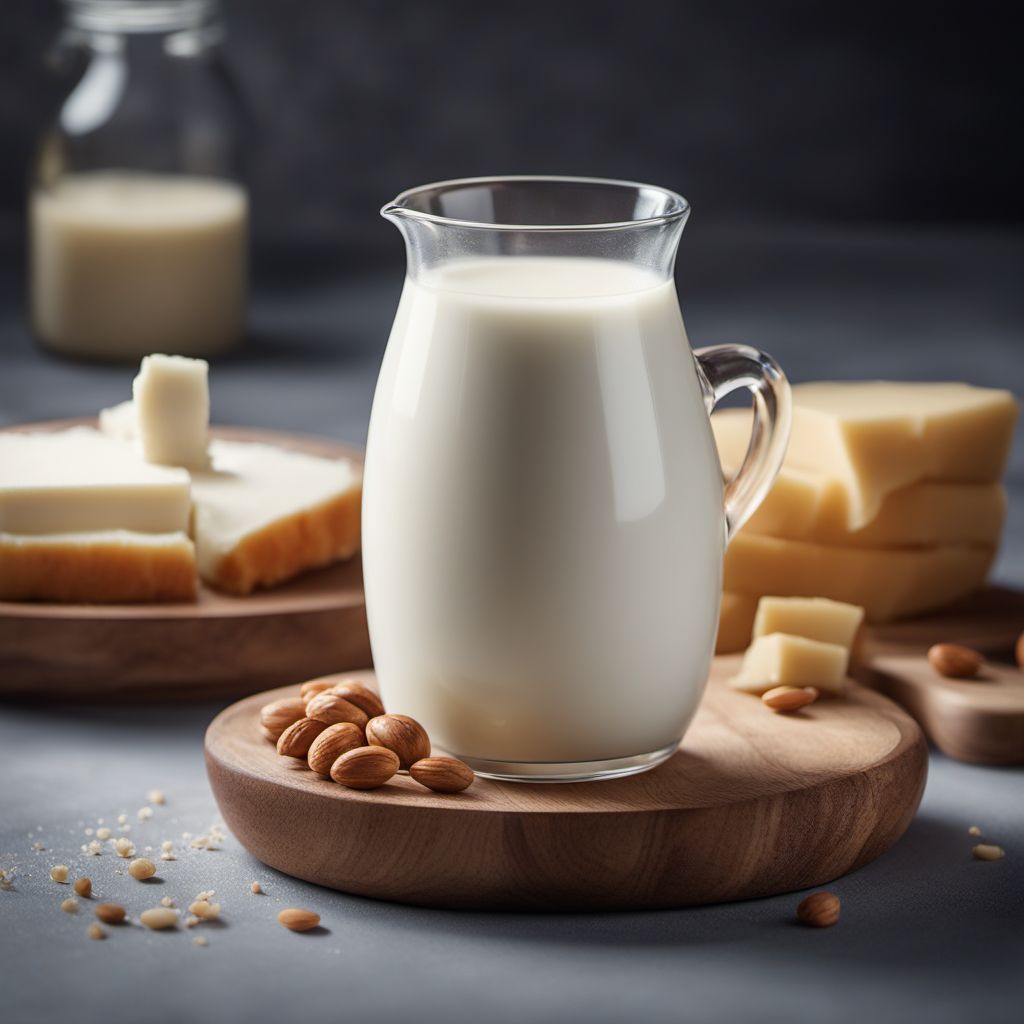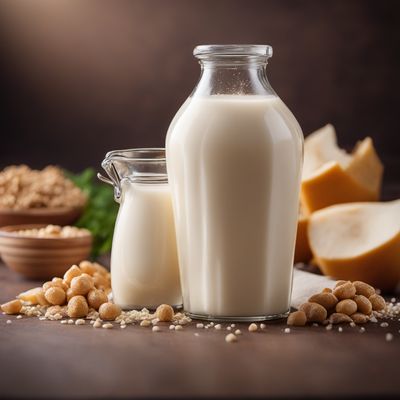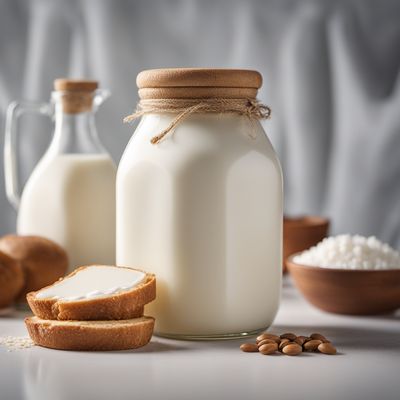
Ingredient
Cow milk, skimmed (low fat)
The Lighter Option: Skimmed Cow Milk
Skimmed cow milk is obtained by removing the cream from whole cow milk, resulting in a lower fat content. It has a pale white color and a thinner consistency compared to whole milk. Skimmed milk has a mild and slightly sweet taste, with a smoother texture. It is commonly used in cooking, baking, and as a base for beverages.
Origins and history
The consumption of cow milk dates back thousands of years and has been an integral part of human diets and cultures around the world. Skimmed cow milk became popular as a healthier alternative to whole milk, as it contains less fat while still providing essential nutrients. It is widely consumed in various forms, such as in beverages, dairy products, and as an ingredient in cooking and baking.
Nutritional information
Skimmed cow milk is a good source of protein, calcium, and vitamins D and B12. It is also lower in calories and fat compared to whole milk. It can be a suitable option for individuals who are watching their fat intake or have dietary restrictions.
Allergens
People with lactose intolerance or milk allergies should avoid skimmed cow milk. It is important to consult with a healthcare professional if you have any concerns or known allergies.
How to select
When selecting skimmed cow milk, look for brands that are reputable and have a good track record for quality. Check the expiration date to ensure freshness. It is also important to consider the packaging, as milk stored in opaque containers helps protect it from light exposure, which can affect its quality.
Storage recommendations
Skimmed cow milk should be stored in the refrigerator at a temperature below 40°F (4°C). It is best to keep it in its original container, tightly sealed, to prevent any contamination or absorption of odors. Use it within the designated expiration date for optimal freshness and quality.
How to produce
Skimmed cow milk is produced on a large scale by dairy farms and processing facilities. It requires specialized equipment to separate the cream from the milk. It is not feasible for amateurs to produce skimmed cow milk at home.
Preparation tips
Skimmed cow milk can be used in various recipes, such as soups, sauces, smoothies, and baked goods. It can be substituted for whole milk in most recipes without significant changes in texture or taste. However, it is important to note that the reduced fat content may affect the richness and creaminess of certain dishes.
Substitutions
Whole milk, almond milk, or soy milk can be used as substitutes for skimmed cow milk. However, it is important to consider the differences in taste and texture that these substitutions may bring to the final dish.
Culinary uses
Skimmed cow milk is commonly used in cooking, baking, and as a base for beverages like coffee, tea, and smoothies. It is also used to make dairy products like yogurt, cheese, and ice cream. Its lighter consistency and lower fat content make it a versatile ingredient in various culinary applications.
Availability
Skimmed cow milk is widely available in most grocery stores, supermarkets, and convenience stores. It is commonly produced and consumed in countries with a significant dairy industry, such as the United States, European countries, and Australia.
More ingredients from this category
Recipes using Cow milk, skimmed (low fat) » Browse all

Vietnamese-style Biryani
Vietnamese-inspired Fragrant Rice Delight

Icelandic Vanilla Skyr Gelato
Skyr-Infused Vanilla Gelato: A Taste of Iceland

Mozzarella in Carrozza with a Burkinabé Twist
Savory Mozzarella Fritters with a Burkinabé Flair

Soulful Bouillabaisse
Soulful Seafood Stew: A Southern Twist on Bouillabaisse

Scottish Cala
Savory Scottish Pancakes with a Twist

Italian-inspired Omeletta with Sun-dried Tomatoes and Basil
Sun-kissed Omeletta: A Burst of Italian Flavors

Kozjanski Krapi with Mushroom Sauce
Savory Slovenian Delight: Kozjanski Krapi with Mushroom Sauce

Kenyan-style Corn Fritters
Savory Kenyan Corn Fritters: A Taste of Tradition

Classic New England Clam Cakes
Ocean Bites: Crispy Clam Cakes with a Seafood Twist

Pinni - Traditional Pakistani Sweet
Heavenly Delight: Pinni - A Taste of Pakistan's Sweet Tradition

Bolivian-Style Carbonara Pizza
Andean Fusion: Bolivian Carbonara Pizza

Murgh Malai (Dutch Style)
Creamy Dutch Chicken Curry


